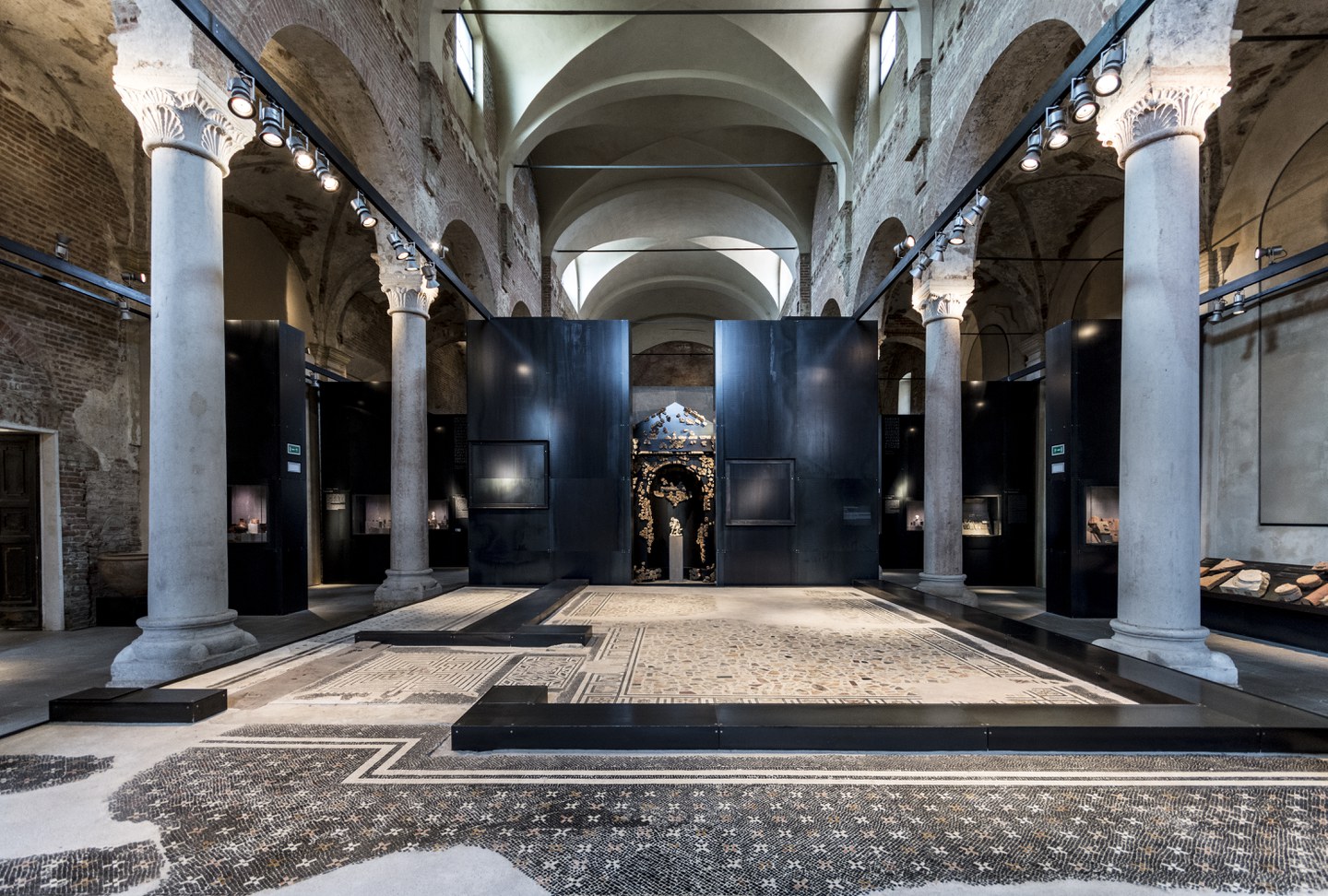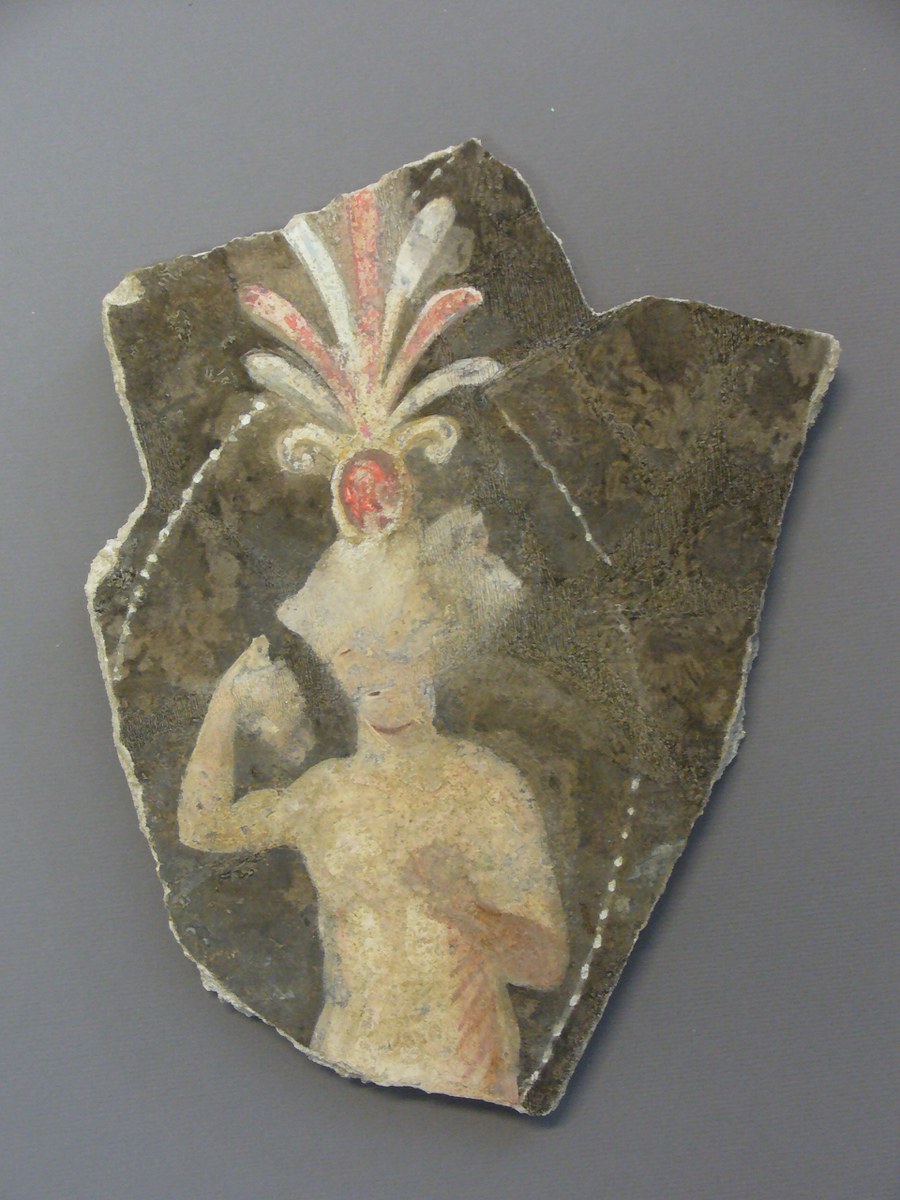Archaeological Museum "San Lorenzo"
The private space


The private space
If the mosaic floors have always historically represented the most famous part of the archaeological findings in Cremona, the wall painting was not documented before the excavations in the domus del Ninfeo in Marconi Square.
The painting decorations were mainly made using the fresco technique: the colors were put on a wet plaster made of lime and sand. Once the plaster was dry it was completely fixed there. The pigments used for the most important frescos of the domus del Ninfeo were made up of calcite for the white, carbon black for the black, a mix of green ground and Egyptian blue for the green (in all its shades) and the hematite for the pink and purple. For the brightening red it was used a big quantity of cinnabar, a precious and expensive artificial pigment (mercuric sulfide). The price of this pigment was so high that it was given in a controlled quantity by the client. The archaeological surveys of the last years in Marconi Square allowed to find a huge quantity of fragmented frescoes, chronologically distributed from the 2nd century b.C. to the first Imperial Age (end of the 1st century b.C. – 1st century a.C.). They show, for their high quality and for the similarity to the artistic models appreciated by the Roman political upper classes, the richness and the social position of the owners.
Inside of them it was isolated a nucleus of painted plasters (in 950 cases) in which it was recognized the decoration of a bedroom (cubiculum) which is in our territory the only, complete and big example of high level painting in the Augustan age. The cubicolum, in the aristocratic domus, did not have only the function of offering rest. It also represented an exclusive and privileged occasion of welcoming people. It was a sort of small living room for few people, specifically selected. This explains its dimensions (in our case more or less 25 total square meters) and the division in two areas (waiting room and bedchamber) with several extremely refined decorations. Our cubicolum, called “Arianna’s room” because of the theme of the two paintings on the waiting room’s walls, was on the first floor of the domus.